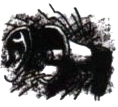List some of the common wastes produced in mining operation and mention how these can be reused.
Step-by-Step Solution:
1. Identify Common Wastes in Mining Operations:
- The first step is to list the common types of waste generated during mining activities. Some of these include:
- Dug ground soil
- Broken rock pieces
- Sludge
- Waste mineral water
- Slag
2. Discuss Reuse of Dug Ground Soil:
- Dug ground soil is the soil that is removed to extract mineral ore. This soil can be reused for:
- Vegetating the area to restore the ecosystem.
- Contouring the land to prevent erosion and improve land stability.
3. Discuss Reuse of Broken Rock Pieces:
- Broken rock pieces are created when large rocks are fragmented during mining. These can be reused in several ways:
- Reforming the ground to create stable surfaces.
- Producing bricks for construction.
- Constructing dams to manage excess water.
- Mixing with cement for building materials.
4. Discuss Reuse of Sludge:
- Sludge is a byproduct of metallurgical processes and often contains valuable minerals. It can be reused by:
- Chemically treating it to extract sulfuric acid.
- Utilizing red mud (a type of sludge) in the manufacturing of glass.
5. Discuss Reuse of Waste Mineral Water:
- Waste mineral water is generated during mining operations. This water can be:
- Collected and treated to make it safe for drinking and other uses.
6. Discuss Reuse of Slag:
- Slag is an inorganic waste produced during the extraction of metals. It can be reused for:
- Fabricating cement.
- Creating construction materials, especially for road construction.
Summary of Wastes and Their Reuses:
- Dug Ground Soil: Used for vegetation and land contouring.
- Broken Rock Pieces: Used for ground reforming, brick production, dam construction, and mixing with cement.
- Sludge: Treated for sulfuric acid production and used in glass manufacturing.
- Waste Mineral Water: Treated for safe drinking water.
- Slag: Used in cement fabrication and road construction materials.
- The first step is to list the common types of waste generated during mining activities. Some of these include:
- Dug ground soil
- Broken rock pieces
- Sludge
- Waste mineral water
- Slag
- Dug ground soil is the soil that is removed to extract mineral ore. This soil can be reused for:
- Vegetating the area to restore the ecosystem.
- Contouring the land to prevent erosion and improve land stability.
- Broken rock pieces are created when large rocks are fragmented during mining. These can be reused in several ways:
- Reforming the ground to create stable surfaces.
- Producing bricks for construction.
- Constructing dams to manage excess water.
- Mixing with cement for building materials.
- Sludge is a byproduct of metallurgical processes and often contains valuable minerals. It can be reused by:
- Chemically treating it to extract sulfuric acid.
- Utilizing red mud (a type of sludge) in the manufacturing of glass.
- Waste mineral water is generated during mining operations. This water can be:
- Collected and treated to make it safe for drinking and other uses.
- Slag is an inorganic waste produced during the extraction of metals. It can be reused for:
- Fabricating cement.
- Creating construction materials, especially for road construction.
- Dug Ground Soil: Used for vegetation and land contouring.
- Broken Rock Pieces: Used for ground reforming, brick production, dam construction, and mixing with cement.
- Sludge: Treated for sulfuric acid production and used in glass manufacturing.
- Waste Mineral Water: Treated for safe drinking water.
- Slag: Used in cement fabrication and road construction materials.
Topper's Solved these Questions
- WASTE GENERATION AND MANAGEMENT BOOK - ICSECHAPTER - WASTE GENERATION AND MANAGEMENT EXERCISE - Progress Check
11 Videos
- WASTE GENERATION AND MANAGEMENT BOOK - ICSECHAPTER - WASTE GENERATION AND MANAGEMENT EXERCISE - Review Questions (Short Answer Type)
2 Videos
- TISSUES: PLANT AND ANIMAL TISSUESBOOK - ICSECHAPTER - TISSUES: PLANT AND ANIMAL TISSUESEXERCISE - REVIEW QUESTIONS (E. STRUCTURED/APPLICATION QUESTIONS )
7 Videos
Similar Questions
List four different excretory wastes produced in human beings.
View SolutionList the two methodologies which were involved in human genome project . Mention how they were used.
Explain YAC and mention what was it used for.
View SolutionThe three microbes are listed below. Name the product produced by each one of them and mention their use.
(a) Aspergillus niger
(b) Trichoderma polysporum
(c) Monascus purpureus
View SolutionHow can the pitch of sound produced in a piano be changed ?
View SolutionWhere do the lymphocytes produced by the lymphoid organ mentioned above migrate and how do they affect immunity?
View SolutionIn a bacterial culture, some of the colonies produced blue colour in the presence of a chromogenic substrate and some did not due to the presence or absence of an insert (rDNA) in the coding sequence of β - galactosidase.
(a) Mention the mechanism and the steps involved in this experiment.
(b) How is it advantageous over simultaneous plating on two plates having different antibiotics?
View SolutionList out some common features in cat, rat and bat.
View SolutionHow is golden rice produced by genetic engineering. Mention its significance.
View SolutionGiven below is a representation of a kind of pollution. Study the same and answer the questions that follow :

(i) Name the kind of pollution.
(ii) List any three common sources of this pollution
(iii) Mention three harmful effects of this pollution on human health.
(iv) Explain the term 'Pollutant'.
(v) Name two soil pollutants.
View SolutionPower P is to be delivered to a device via transmission cables having resistance Rc. If V is the voltage across R and I the current through it , find the power wasted and how can it be reduced.
View Solution
